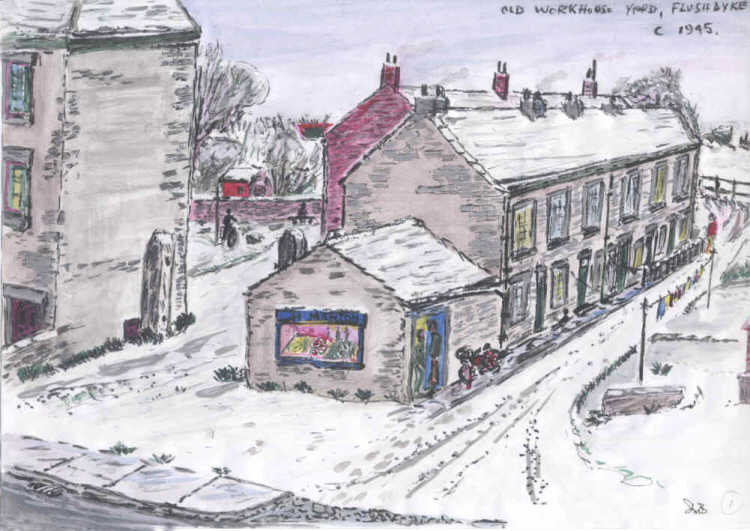Old Workhouse Yard, Flushdyke

This old block of buildings, some dating back to the 18th century used to be Ossett's Workhouse, which was in existence before 1780, but probably dates back much earlier still. Joseph Townend, of the Green, Ossett was master of the Ossett Workhouse between 1780 and 1786. In 1834, the workhouse housed 80 inmates and was one of the largest in the district. To offset costs and help pay for their upkeep, workhouse inmates were hired out to local trades-people at low wages to do a variety of tasks. Attached to the workhouse was some land, which was farmed to provide food and some of the paupers were engaged in spinning yarn. Eventually, after the formation of the Dewsbury Poor Law Union in 1837 (which had two representatives from Ossett), the workhouse at Flushdyke closed and from 1853, the Ossett inmates were housed instead at the new Dewsbury Union Workhouse, which had been built at a cost of £8,000 at Healds Road with another £2,000 spent on a separate block for children.
An advert in the The "Leeds Mercury", Saturday 12th December 1812 gives us a few more clues about the day-to-day running of the Ossett Workhouse:
"WANTED - By the township of Ossett, on the 11th day of January 1813, a MAN and his WIFE, to live in and manage the Workhouse. The man must be qualified to keep accounts, make out assessments, and collect them, give assistance to the overseers in paying the poor and transact the town's business. Testimonials of good character will be required and a steady, active man will receive a liberal salary.
Proposals in writing, post paid, will be received, addressed to Richard Sheppard, Constable of Ossett by the 4th say of January aforesaid, when answers will be given. N.B. A person having a family need not apply."
The row of stone cottages were traditional 'one up, one down' houses and behind were two larger brick houses. Beyond the brick houses and set in a brick-walled garden was another larger brick house. Inside the brick house, various items had been screwed on to the wooden roof beams and it is thought that these were the remnants of machinery that would have been used in the workhouse. The larger house on the left, possibly the Workhouse Master's dwelling, was a three-storey building and there was evidence of gates hung across the yard entrance. This house was also know as "Mortuary House" and part of it, perhaps the cellar, may have served as a mortuary when the workhouse was in existence.
The one-storey building at the end of the row of houses was used for making ice cream in the late 1940s, and was later fully developed into a shop by Harry Manton, selling fish, fruit and vegetables. A family called Pickersgill lived in the first house in the row after the death of Bob Akeroyd and then moved to occupy the house adjacent when Jack Hinchcliffe died. The Watson family lived in the first red brick house and Austin Scott lived in the larger three-storey house.